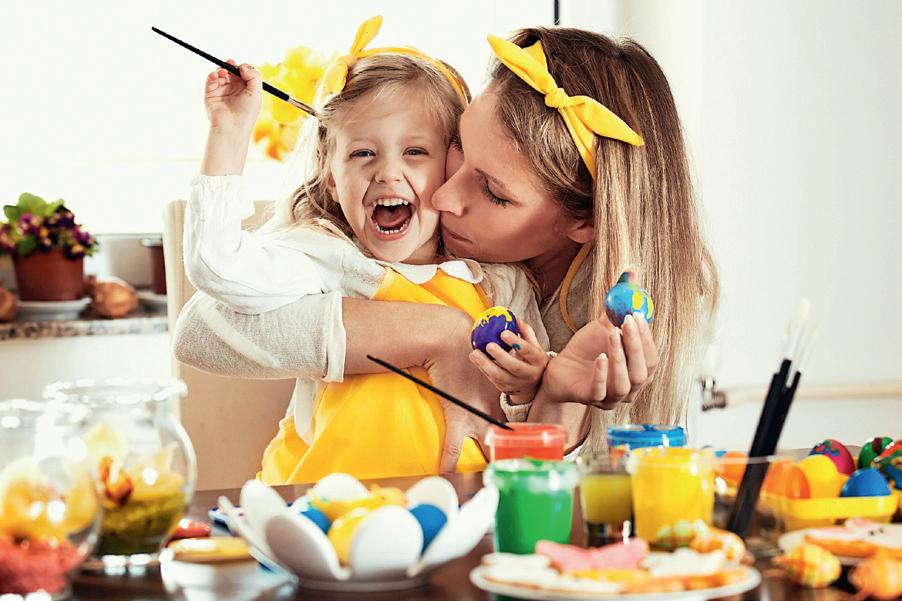
2 minute read
AN EGG-CELLENT ACTIvIT y
A HISTOry OF EGG dECOrATING
By GEMMA PETErS
Advertisement
My seven-year-old darcey sat, head bowed over an egg she was painstakingly covering in tiny glittery plastic gems, determined to win the class egg decorating competition. She looked up, “why do we decorate eggs at Easter?” she asked. It’s a good question.
Humans have been decorating eggs for centuries. In the UK, the practice can be traced back to early pagan rituals, celebrating the arrival of spring and new life.
One of the earliest records of egg decoration comes from ancient Persia, where eggs were decorated to celebrate New year. As eggs are widely considered a symbol of fertility and rebirth, the tradition gradually spread to other cultures. It also made them a fitting representation of the themes of Easter, so Christians used eggs as a way to symbolize the resurrection of Jesus Christ.
In medieval Europe, it became common to give decorated eggs as gifts during the Easter season. wealthier people gave eggs made of precious metals, enamel, and glass, decorated with intricate patterns and religious imagery.
In the 18th and 19th centuries, the tradition of decorating Easter eggs became even more widespread. About this time people started to use wax resist techniques. This involves the application of a coat of one colour, followed by painting an intricate wax pattern on to the egg, then applying a second coat of a different colour. The wax resists the second glaze from adhering, which allows the painted design to show.
In many cultures, Easter egg decorating has taken on significance beyond its original seasonal and religious origins. In Ukraine, for example, the art of egg decorating using wax resist is known as pysanky and has become a highly skilled form of folk art. Pysanky features intricate patterns and symbols that have deep cultural and spiritual meaning.
In russia in the late 19th and early 20th centuries the jewellery firm Fabergé created extravagantly decorated eggs for the russian Imperial family. These are some of the most exquisite and rare treasures in the world, known for their beautiful, intricate design and delicate workmanship. The first Fabergé egg was commissioned in 1885 by Tsar Alexander III as an Easter gift for his wife. The egg is known as the “Hen Egg,” and was crafted from gold. Inside there was even a miniature replica of the imperial crown. The success of this first egg led to a series of annual commissions, each one more elaborate and detailed than the last. In total, 50 Fabergé eggs were created, symbols of the wealth and power of the russian Imperial family. Today they sell for millions of dollars at auction.
My daughter’s glue-and-gem-encrusted offering may not rival the fabulousness of Fabergé but she enjoyed taking part in an historic tradition. Many communities hold Easter egg decorating contests and festivals, where participants can showcase their creativity and craftsmanship. Perhaps there’s one in your local area. whether as part of a church activity, or simply a fun family event, Easter egg decorating remains a beloved tradition that brings people together and celebrates the joys of spring and new beginnings.
To contact FELPHAM IN FOCUS please email: office@infocusmagazines.co.uk
Please mention FELPHAM IN FOCUS when responding to adverts















